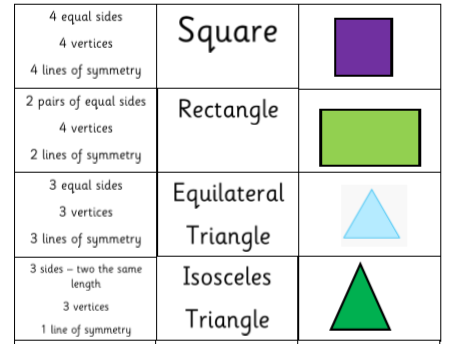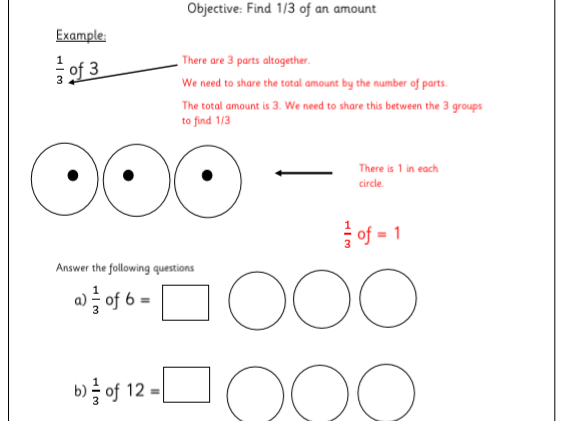205Uploads
136k+Views
105k+Downloads
Mathematics

I can name and recognise common 2D shapes
A full lesson including lesson PowerPoint and recording sheet to meet the objective ‘I can name and recognise common 2D shapes’ including: square, triangle, rectangle, circle, hexagon, pentagon and oval. This lesson discusses properties of 2D shapes, as well as where we might find the shapes in our own environment. The lesson then includes a practical activity which allows the children to find 2d shapes in their own environment, which they can then record on their sheet.

3d shape properties matching cards
Properties of 3D shapes including: number of faces, number of vertices and number of edges. Activity allows children to match the description of the properties to the name of the shape to the picture of the shape. Can be used as a simple matching activity, a memory game (where all the cards are turned upside down) or a revision activity. Simply cut out the cards to start.

Properties of 2D shape cards
Properties of 2D shapes including: number of sides, number of vertices and lines of symmetry. Activity allows children to match the description of the properties to the name of the shape to the picture of the shape. Can be used as a simple matching activity, a memory game (where all the cards are turned upside down) or a revision activity. Simply cut out the cards to start.

I can name and recognise 3d shapes
A full lesson including lesson PowerPoint and recording sheet to meet the objective ‘I can name and recognise common 3D shapes’ including: cube, cuboid, sphere, cone and cylinder.
This lesson discusses properties of 3D shapes, as well as where we might find the shapes in our own environment. The lesson then includes a practical activity which allows the children to find 3d shapes in their own environment, which they can then record on their sheet.

Find One third of an amount
finding one third of an amount (a number) e.g. 1/3 of 3. We look at how many parts there are altogehter- in this case 3, and share the total amount by this many parts.

Partition into hundreds, tens and ones
Supporting children’s knowledge and understanding of place value. Two different worksheets; partitioning into hundreds, tens and ones; and partitioning into tens and ones.

I can compare and classify 2D shapes
A complete lesson including lesson PowerPoint and worksheet to meet the objective: ‘I can compare and classify 2D shapes’.
Supports students understanding of 2D shapes- key vocabulary such as names of shapes, sides, vertices and lines of symmetry.

Year 1 Addition and Subtraction word problems
A range of addition and subtraction word problems to support mathematical skills with the use of real world application.
6 subtraction problems
6 addition problems
Colourful word problem cards with the addition of pictures.

Subtract a one digit number from a two digit number
Check for understanding for your students
Subtract a one digit number from a two digit number

Array Matching Cards
A simple activity to support children’s understanding of early multiplication with the use of pictorial representations- arrays. Match the array card to the repeated addition sentence and the multiplication sentence.

Identify one more and one less than a given number up to 50
Year 1 Objective: Identify one more and one less than any given number up to 50

Find 1/4 of a shape
An activity to support children’s understanding of recognising one quarter in different ways. Shade in one quarter of each of the different shapes.

Shape symmetry
This activity will support children’s understanding of Line Symmetry. Children have to complete the missing half to complete the shape- making sure that it is symmetrical- the same on both sides.

2d shape book
An activity booklet to support children to learn the 2d shapes and their properties. Shapes include: square, rectangle, triangle, circle, hexagon, pentagon and octagon. The children have to trace the letters to spell out the name of the shape, colour in the shape the correct colour and then fill in the blanks.

Ordering numbers from smallest to largest
5 differentiated sheets getting children to practice the skill of ordering numbers from smallest to largest.

Properties of 2D shapes
2 differentiated tables for students to fill in the properties of 2D shapes
-To complete number of sides and vertices
-To complete number of sides, vertices and lines of symmetry.

Rounding to the nearest hundred
A quick exercise for children to review and practice rounding to the nearest hundred (including word problems)




















